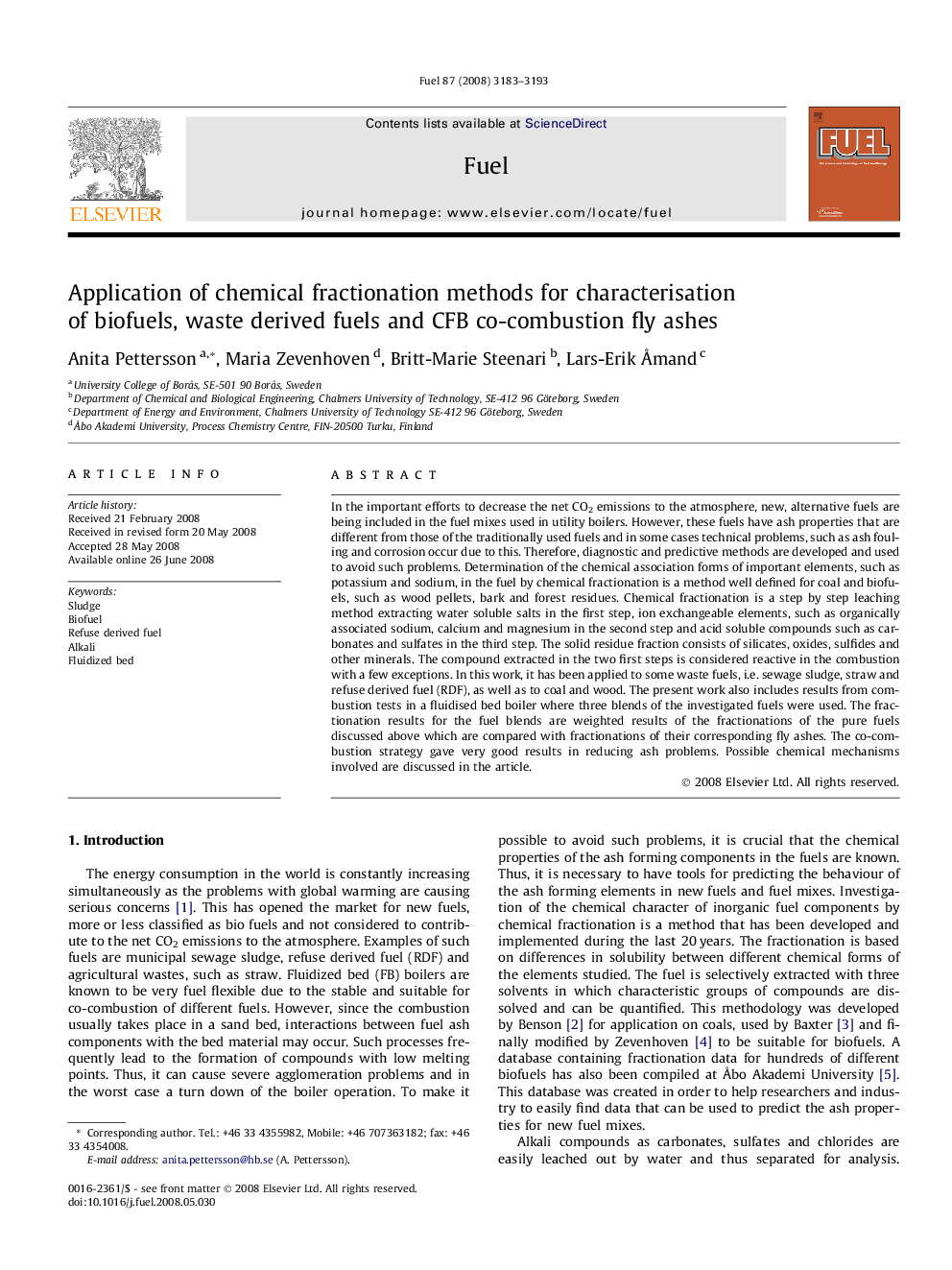| کد مقاله | کد نشریه | سال انتشار | مقاله انگلیسی | نسخه تمام متن |
|---|---|---|---|---|
| 208223 | 461243 | 2008 | 11 صفحه PDF | دانلود رایگان |

In the important efforts to decrease the net CO2 emissions to the atmosphere, new, alternative fuels are being included in the fuel mixes used in utility boilers. However, these fuels have ash properties that are different from those of the traditionally used fuels and in some cases technical problems, such as ash fouling and corrosion occur due to this. Therefore, diagnostic and predictive methods are developed and used to avoid such problems. Determination of the chemical association forms of important elements, such as potassium and sodium, in the fuel by chemical fractionation is a method well defined for coal and biofuels, such as wood pellets, bark and forest residues. Chemical fractionation is a step by step leaching method extracting water soluble salts in the first step, ion exchangeable elements, such as organically associated sodium, calcium and magnesium in the second step and acid soluble compounds such as carbonates and sulfates in the third step. The solid residue fraction consists of silicates, oxides, sulfides and other minerals. The compound extracted in the two first steps is considered reactive in the combustion with a few exceptions. In this work, it has been applied to some waste fuels, i.e. sewage sludge, straw and refuse derived fuel (RDF), as well as to coal and wood. The present work also includes results from combustion tests in a fluidised bed boiler where three blends of the investigated fuels were used. The fractionation results for the fuel blends are weighted results of the fractionations of the pure fuels discussed above which are compared with fractionations of their corresponding fly ashes. The co-combustion strategy gave very good results in reducing ash problems. Possible chemical mechanisms involved are discussed in the article.
Journal: Fuel - Volume 87, Issues 15–16, November 2008, Pages 3183–3193